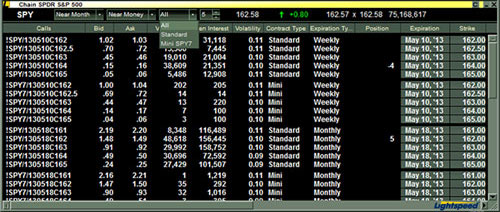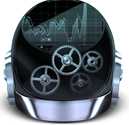High Frequency Trading (HFT) is a form of electronic trading that uses complex algorithms to analyze and evaluate multiple markets simultaneously. Depending on market conditions, HFT systems execute tens of orders within seconds.

⚡ The HFT Domination in the US
High-frequency trading systems open and close positions in fractions of a second, creating what are called million-second markets. These fast markets are extremely liquid and can significantly influence all major equity markets. It is estimated that computer-based high-frequency trading accounts for around 50% of the total US stock-trading volume, with some estimates exceeding 65%. High-frequency trading has become very popular in recent years, with hundreds of start-up companies worldwide focusing exclusively on capitalizing on opportunities in this lucrative market. In the US alone, the high-frequency trading industry is estimated to be worth about 300 billion USD. Overall, more than 20,000 firms in the US specialize in fast-paced computerized stock trading programs. According to Deutsche Bank, the key players in the HFT industry include:
i) Multi-service firms: Citigroup and Goldman Sachs
ii) Hedge funds: Citadel and Renaissance Technologies
iii) Trading firms: Getco, Optiver, and Tradebot
Why does HFT make investors and regulators skeptical?
On May 6th, 2010, the Dow Jones Industrial Average plunged 600 points in just five minutes—a phenomenon known as the "Flash Crash." After dropping 400 points, the DJIA recovered within 20 minutes and closed the day about 3.0% lower. High-frequency trading was blamed for this unusual market behavior, and since then, HFT has caused widespread skepticism about market stability and the future.
♞ High-Frequency Trading Strategies
Here are the main high-frequency trading strategies:
-
Market Making Strategy
This is the simplest way to profit from high-frequency trading. It involves placing two opposing trades (bid and ask) to earn from the bid-ask spread.
-
Low-Latency Arbitrage
This strategy relies on low-latency technology. The ability to trade quickly allows exploitation of price inefficiencies when the same security trades simultaneously on two different markets.
-
News-Trading Strategies
A popular speculation method, this strategy takes advantage of predictable fluctuations triggered by macroeconomic or company news. Properly configured HFT systems can process and trade news faster than individual human traders.
-
Event Arbitrage
This approach seeks to exploit predictable short-term price movements following important events.
-
Statistical Arbitrage
These strategies capitalize on temporary deviations from key historical statistical relationships among certain financial assets.
📒 High-Frequency Trading Basic Glossary
-
What is High-Frequency Trading (HFT)? Definition by Nasdaq
High-Frequency Trading is computerized trading using proprietary algorithms. There are two types of HFT trading:
(i) Execution trading, where an order (often large) is executed via a computerized algorithm designed to get the best possible price. The order may be split into smaller parts and executed at different times.
(ii) The second type involves not executing a set order but searching for small trading opportunities in the market.
-
What is Latency?
Latency is the time required for a signal to be sent and received. The lower the latency, the faster the trading. Since the speed of light in a fiber optic cable is constant at 186,000 miles per second, latency is largely determined by geography—the distance between the signal sender and receiver.
-
What is Co-Location?
Co-location means that the servers of HFT firms are located in the same facility as the exchange’s servers. This allows HFT firms to access price data fractions of a second before others. The location of an HFT firm’s servers is also called the ‘Point of Presence.’
-
What is Statistical Arbitrage?
Historical price correlations between securities create opportunities to trade imbalances in those relationships. Trading based solely on standard deviations of these correlations is called Statistical Arbitrage.
-
What are Liquidity Rebates?
Liquidity rebates are incentives paid to market makers to increase system liquidity. HFT firms that qualify for these rebates can profit from trading volumes—even in zero-sum positions—which is highly valuable.
-
What is Dark Pool Liquidity?
Dark pools refer to trading activity by anonymous institutions hidden from the public. Dark pool liquidity typically appears in large block trades.
-
What is a Matching Engine?
A Matching Engine is an algorithm designed to pair buyers and sellers by matching the best bid and ask orders.
🛠 High-Frequency Trading Software Solutions
Here are two examples of High-Frequency Trading solutions:
-
SILEXX Obsidian
Obsidian is a high-frequency trading system designed to deliver speed, customizability, flexibility, and a rich set of features. Its low-latency infrastructure is powered by Cisco equipment.
Obsidian Trading Features include:
-
Multiple order entries
-
Market depth tickets
-
Hotkeys
-
Complex order tickets for options trading strategies (e.g., Spread Maker)
-
Advanced visualization (fast charting with multiple indicators)
-
Portfolio modules (Delta exposure monitor, dividend policies, etc.)
-
Risk Radar (real-time market risk management)
► Find more about Silexx Obsidian on their web-site
2. Light-Speed Trader

Light-speed Trader features:
-
Multi-threaded and multi-core 64-bit processing
-
Low-latency execution with multiple order routing destinations
-
Advanced options trading, including time and sales monitoring
-
GTC orders (Limit, Stop, Stop Limit)
💼 Key Features for HFT Brokers
-
Latency <50ms: Essential for arbitrage strategies; achieved through colocation, fiber-optic connections, and Direct Market Access (DMA).
-
ECN/STP Execution: Provides direct access to liquidity without a dealing desk, eliminating requotes and preserving trader anonymity.
-
Algorithmic Tools:
-
cTrader: Offers 1-second charts, FIX API integration, and a robust environment for algorithmic coding.
-
FIX API: Enables direct connectivity to liquidity providers by bypassing traditional platforms.
-
-
Cost Efficiency:
-
Low commissions (e.g., $2 per lot) coupled with raw spreads.
-
Volume rebates (e.g., 5% rebate on monthly trading volumes).
-
🔗 Here are some brokers offering this type of trading: ► TDAmeritrade | ► InteractiveBrokers | ► SuperDerivatives
📖 Suggested Book: “Flash Boys” by Michael Lewis
■ High-Frequency Trading (HFT)
ForexExperts.net









